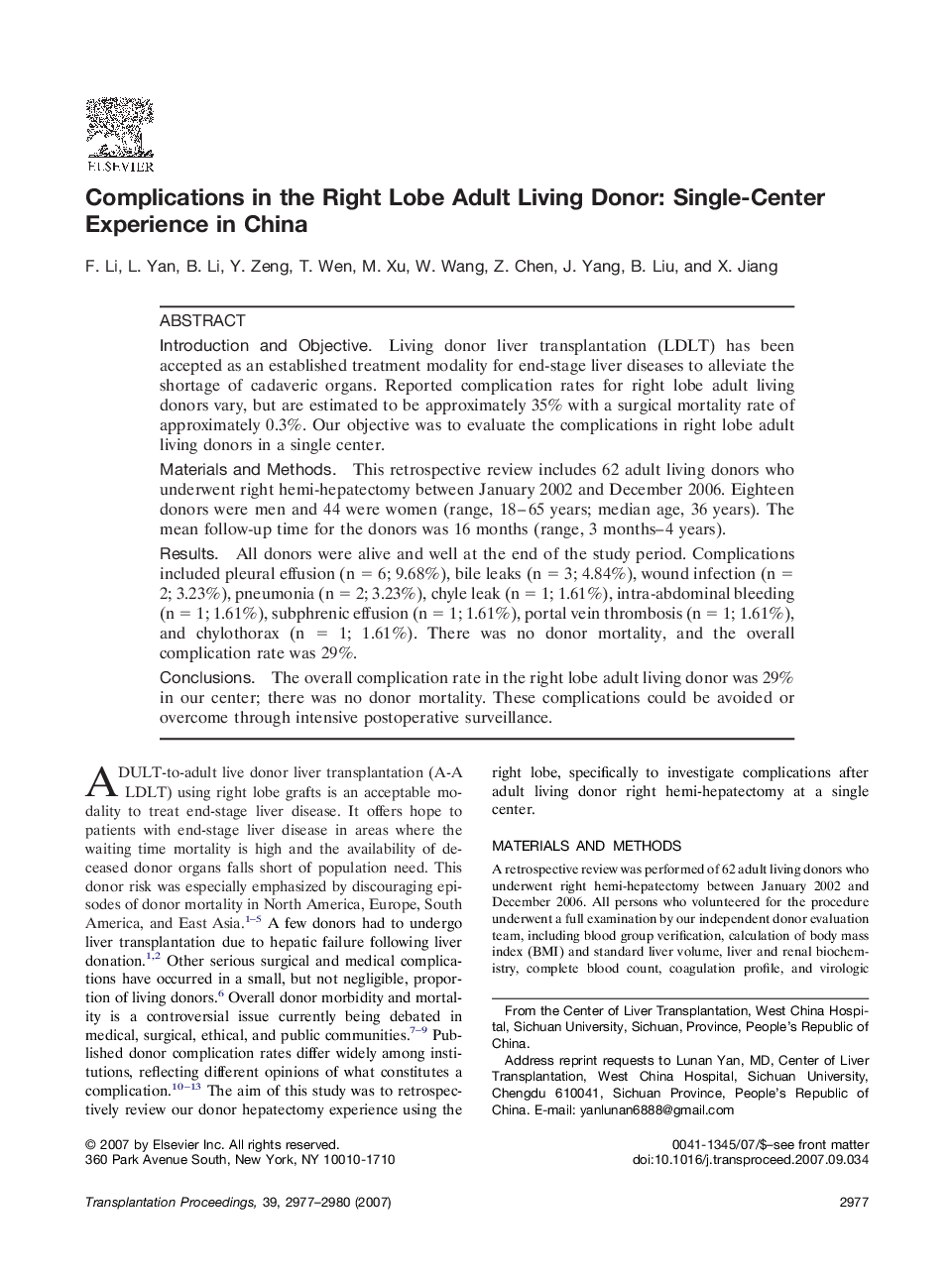| Article ID | Journal | Published Year | Pages | File Type |
|---|---|---|---|---|
| 4262706 | Transplantation Proceedings | 2007 | 4 Pages |
Introduction and ObjectiveLiving donor liver transplantation (LDLT) has been accepted as an established treatment modality for end-stage liver diseases to alleviate the shortage of cadaveric organs. Reported complication rates for right lobe adult living donors vary, but are estimated to be approximately 35% with a surgical mortality rate of approximately 0.3%. Our objective was to evaluate the complications in right lobe adult living donors in a single center.Materials and MethodsThis retrospective review includes 62 adult living donors who underwent right hemi-hepatectomy between January 2002 and December 2006. Eighteen donors were men and 44 were women (range, 18–65 years; median age, 36 years). The mean follow-up time for the donors was 16 months (range, 3 months–4 years).ResultsAll donors were alive and well at the end of the study period. Complications included pleural effusion (n = 6; 9.68%), bile leaks (n = 3; 4.84%), wound infection (n = 2; 3.23%), pneumonia (n = 2; 3.23%), chyle leak (n = 1; 1.61%), intra-abdominal bleeding (n = 1; 1.61%), subphrenic effusion (n = 1; 1.61%), portal vein thrombosis (n = 1; 1.61%), and chylothorax (n = 1; 1.61%). There was no donor mortality, and the overall complication rate was 29%.ConclusionsThe overall complication rate in the right lobe adult living donor was 29% in our center; there was no donor mortality. These complications could be avoided or overcome through intensive postoperative surveillance.
